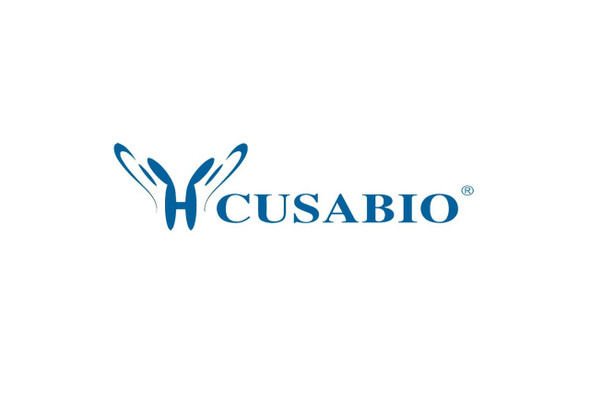Cusabio Influenza B virus Recombinants
Recombinant Influenza B virus Nuclear export protein (NS) | CSB-EP362296IJZ
- SKU:
- CSB-EP362296IJZ
- Availability:
- 3 - 7 Working Days
Description
Recombinant Influenza B virus Nuclear export protein (NS) | CSB-EP362296IJZ | Cusabio
Alternative Name(s): Non-structural protein 2 (NS2) (NEP)
Gene Names: NS
Research Areas: Microbiology
Organism: Influenza B virus (strain B/Yamagata/1/1973)
AA Sequence: MADNMTTTQIEWRMKKMAIGSSTHSSSVLMKDIQSQFEQLKLRWESYPNLVKSTDYHQRRETIRLVTEELYLLSKRIDDNILFHKTVIANSSIIADMIVSLSLLETLYEMKDVVEVYSRQCL
Source: E.coli
Tag Info: N-terminal 10xHis-tagged and C-terminal Myc-tagged
Expression Region: 1-122aa
Sequence Info: Full Length
MW: 21.8 kDa
Purity: Greater than 85% as determined by SDS-PAGE.
Relevance: Mediates the nuclear export of encapsidated genomic RNAs. Acts as an adapter between viral RNPs complexes and the nuclear export machinery of the cell. Possesses no intrinsic RNA-binding activity, but includes a C-terminal M1-binding domain. This domain is believed to allow recognition of RNPs bound to the protein M1. Since protein M1 is not available in large quantities before late stages of infection, such an indirect recognition mechanism probably ensures that genomic RNPs are not exported from the host nucleus until sufficient quantities of viral mRNA and progeny genomic RNA have been synthesized. Furthermore, the RNPs enter the host cytoplasm only when associated with the M1 protein that is necessary to guide them to the plasma membrane. May down-regulate viral RNA synthesis when overproduced.
Reference: "Influenza B and C virus NEP (NS2) proteins possess nuclear export activities." Paragas J., Talon J., O'Neill R.E., Anderson D.K., Garcia-Sastre A., Palese P. J. Virol. 75:7375-7383(2001)
Storage: The shelf life is related to many factors, storage state, buffer ingredients, storage temperature and the stability of the protein itself. Generally, the shelf life of liquid form is 6 months at -20?/-80?. The shelf life of lyophilized form is 12 months at -20?/-80?.
Notes: Repeated freezing and thawing is not recommended. Store working aliquots at 4? for up to one week.
Function:
Involvement in disease:
Subcellular Location:
Protein Families:
Tissue Specificity:
Paythway:
Form: Liquid or Lyophilized powder
Buffer: If the delivery form is liquid, the default storage buffer is Tris/PBS-based buffer, 5%-50% glycerol. If the delivery form is lyophilized powder, the buffer before lyophilization is Tris/PBS-based buffer, 6% Trehalose, pH 8.0.
Reconstitution: We recommend that this vial be briefly centrifuged prior to opening to bring the contents to the bottom. Please reconstitute protein in deionized sterile water to a concentration of 0.1-1.0 mg/mL.We recommend to add 5-50% of glycerol (final concentration) and aliquot for long-term storage at -20?/-80?. Our default final concentration of glycerol is 50%. Customers could use it as reference.
Uniprot ID: P08014
HGNC Database Link: N/A
UniGene Database Link: N/A
KEGG Database Link: N/A
STRING Database Link: N/A
OMIM Database Link: N/A









